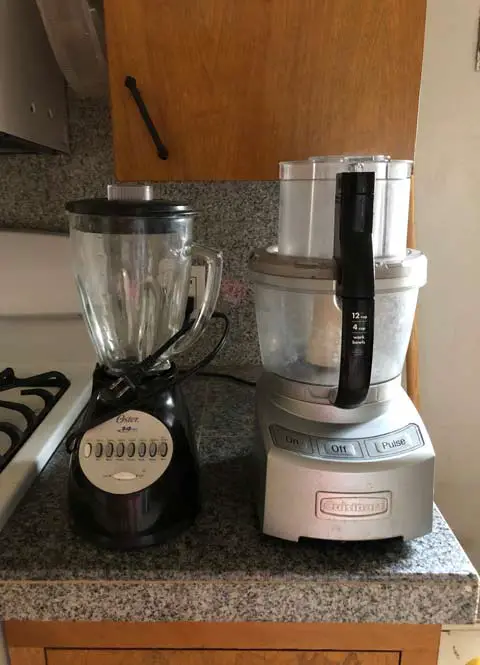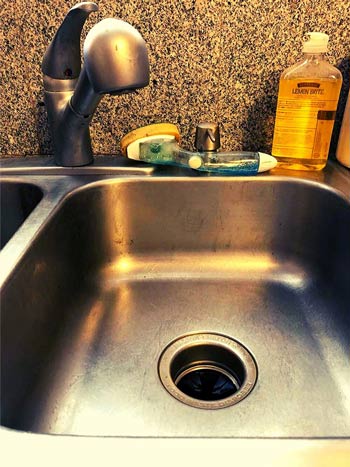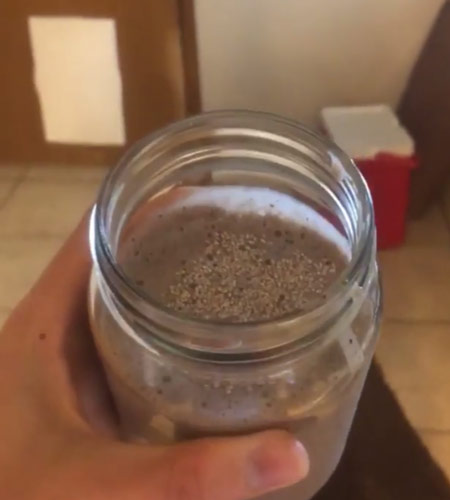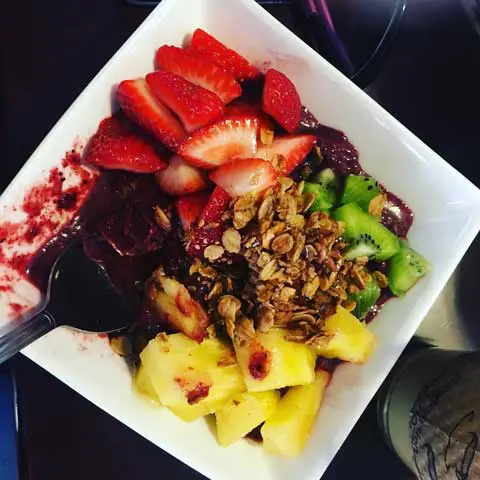You likely already know the difference between a standing mixer and a food processor. But what about the difference between blenders and food processors?
If your kitchen doesn’t have either, which is the best investment? Can a blender do the same tasks as a food processor? Which one is better for a home baker? And super importantly—which one makes the ultimate smoothie?
bothA Brief History of Electric Mixers
Have you ever wondered about when the blender first appeared on the culinary scene? personally love the history of cooking and cookware. Sign me up for that course!
You might be wondering which appliance came first—the food processor or the blender? Read on to find out!
The first blender debuted in the year 1922. A Wisconsin man invented it for mixing up milkshakes and malts. Mmm! By the 1950s, the blender made it out of soda shops and into hospitals and labs.
Around 20 years after that, in the 1970s, the first food processor was shown in Paris. That design was soon refined into the very first Cuisinart and the rest is history.
Did you guess correctly which came first? I didn’t, even though it makes sense that a blender pre-dates a food processor!
The Power of the Blend
When it comes to blenders, there are several more types than the classic kind you probably grew up watching mom make banana smoothies in.
They’re normally used for mixing soups, sauces, and powdered drinks or shakes.
Next, there are hand blenders (or handheld mixers). You’ve probably seen this kind in action beating eggs for delicious cakes!
They’re awesomely easy to clean, that’s what I most appreciate about them.
Handheld mixers are more suited to blending ingredients for desserts than for making smoothies or kneading bread dough (seriously don’t try that it’ll make a mess!).
I use mine whenever a recipe calls for “egg whites beaten until stiff peaks form” or if I’m making homemade whipped cream—yummy!
While we wouldn’t classify them as blenders, standing mixers are closely related to handheld mixers. If you want to know more about those, check out our article on Kitchenaid mixers here. Or if you already have a standing mixer, maybe you’d be interested in ideas for what to make with it. Click here for ideas!
Single-serving blenders got really popular for a while thanks to the infamous Magic Bullet infomercials. They cost less than a full-size blender and are a space-saver.
I don’t own one anymore, but Ninja blender also offers a single-serving size that my friends swear by.
These are perfect for you if you only ever need to make one morning smoothie to go! Plus, no need for an additional glass because it blends right into its own cup. Convenient! When I had my single-serving blender (it was a magic bullet!) I liked to use it to blend my own pumpkin protein pancake mix.
Full-size blenders, the one you likely think of when you hear the word “blender,” are affordable and can perform several kitchen tasks.
I like to use mine for homemade almond milk. Depending on the wattage, you can even whip up a batch of muffin batter in these blenders! Other uses include: salad dressings, pasta sauces, and soups.
Then there’s the creme de la creme of blenders, have you heard of it?
We’re talking, of course, about the Vitamix. Its got a big price tag, but that’s because it can handle some serious work.
Not only can a Vitamix whip up a tasty butternut squash soup in minutes, but it can also heat it for you while it blends. Meaning you’ve got lunch ready with minimal dishes for clean up!
Strong and durable is the name of the Vitamix game.
And finally, the powerful food processor. More expensive than a blender, cheaper than a Vitamix (usually), and capable of taking your home-cooked meals from basic to gourmet in just a few whirls.
Similar to the Vitamix, food processors boast enough power for chunky dips, homemade nut butters, thick soups, sticky doughs, dense cake batters, and more. I don’t know what I would do without mine, and that’s no joke.
The One Largest Difference Between a Blender and a Food Processor
If you’re looking for the short and sweet answer—we hear you! Without dancing around the subject we’ll go ahead and give you the big reveal.
A blender is more ideal for liquids.
A food processor is optimal when solids are involved.
There are benefits to having both kitchen appliances on hand, but an important fact to note is that a food processor can handle liquids better than a blender can tackle tough solids.Who To Turn To?
In this section, we’ll hook you up with a handy chart to easily see which appliance to choose depending on what kitchen task you’re up against. Check it out!
What are you making? | Food Processor | Blender* |
|---|---|---|
Smoothie | Will work | Best choice |
Nut Butter | Best choice | Not ideal (may clog) |
Chop veggies | Best choice | Do not use |
Shred cheese | Best choice | Do not use |
Dips | Best choice | Ok to use (if not chunky |
Soups | Will work | Best choice (if not chunky) |
Bread dough/baking | Best choice | Do not use |
*This chart is excluding Vitamix when considering blenders as it is a machine in its own league!
As you can see, the food processor is capable of all the tasks, but a blender will still get you far if you work with lighter materials.
Which is Easier to Clean Though?
This is a very important question, because I know I don’t like to spend too of my kitchen time cleaning up. I prefer to spend my time cooking and eating.
I’ll shoot straight with you. It’s probably the blender. For the simple reason that it’s fewer pieces.
A food processor has multiple parts, working bowl, separate blade attachments, lid with a seal, etc. The good news is—it’s all dishwasher safe (except the base of course, just wipe that down with a damp cloth).
That said, a blender is a pain to clean if you don’t immediately rinse it out. Sticky fruit will dry on there, or peanut butter gets trapped underneath the blades, and you’ll have to put some serious elbow grease into it.
This is true of most cookware though, and best kitchen practices are to clean up as you go along!
The Ultimate Smoothie
We thought it’d be fun and relevant to this article to add a tip section for how to make the best smoothie. Whether you choose to make your smoothie in a blender or a food processor, these tips will help you craft a masterpiece.
Make a smoothie that rivals high-priced smoothie shops. Thick, creamy, and packed with nutrition, smoothies are perfect as a snack, post-workout treat, or even hearty enough for breakfast!
Make it thick. Nothing adds sweet thickness to your smoothie quite like a banana. Peel ripe bananas and store in your freezer for best results.
Substitutions. Don’t like bananas? Try adding one of these foods as a swap that will still yield thick, creamy results: avocado, silken tofu, yogurt, or cooked oats.
Master your ratios. ½-1 whole banana, ½-1 cup water or other liquid, 1-2 cups leafy greens, and ½ cup ice. This is your base recipe.
Add in the fun stuff. ¼-½ cup of frozen fruit, 1 scoop of your favorite protein powder, or 1 tablespoon of nut butter are all great additions. Feel free to add them all, especially if this shake is replacing a meal!
Super seeds. Chia seeds add protein, fiber, and crunch to your smoothie. Or add any nuts you have around for a health boost and exciting texture.
Sweet Tooth. If you skipped the banana or protein powder, chances are you may want a little sweetener in your smoothie. Try honey, agave nectar, or even a little maple syrup.
Order of operations. Put your frozen fruit in the blender first, then fresh fruits and veggies, followed by your protein or nut butter. Liquid last, then blend before adding some ice. Once the fruits are pureed, add ice, and blend again. Sip and smile!
Seasonal Tip. Want to enjoy smoothies even in the winter? I know I do. Simply skip the ice for a less frozen, denser smoothie sippin’ experience.
Want to bowl it? Smoothie bowls are gaining popularity currently. To make one at home, reduce the amount of liquid you use (no more than ¼ cup!). And don’t skip the thickening agents like avocado or protein powder! Sprinkle nuts, seeds, and berries on top.
That’s the Way the Banana Splits
Our time together has come to an end. We hope this article has settled all your questions on the differences between blenders and food processors. Whichever you choose, investing in a strong, durable machine will guarantee you much success in the kitchen.
Myself, I keep both appliances around, but if I had to give one up nobody touches my food processor—so bye-bye blender.
The world of kitchen appliances is vast, exciting, and getting better all the time. I’m sure the gentleman who invented the very first electric motor would be blown away by the Kitchenaid food processors and Vitamix blenders we have available for home use today!
If you’re wondering which food processor to buy, we can help. Check out our article Cuisinart Vs. Kitchenaid food processor. That comprehensive article covers the differences between food choppers and mini processors as well.
Enjoy a perfect smoothie for us!
Last update on 2024-07-09 / Affiliate links / Images from Amazon Product Advertising API












